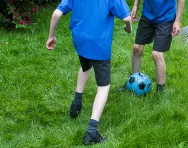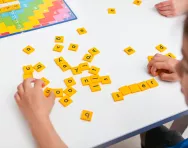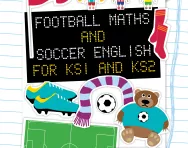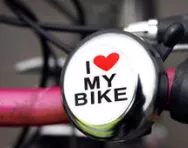Important update from TheSchoolRun
For the past 13 years, TheSchoolRun has been run by a small team of mums working from home, dedicated to providing quality educational resources to primary school parents. Unfortunately, rising supplier costs and falling revenue have made it impossible for us to continue operating, and we’ve had to make the difficult decision to close. The good news: We’ve arranged for another educational provider to take over many of our resources. These will be hosted on a new portal, where the content will be updated and expanded to support your child’s learning.
What this means for subscribers:
- Your subscription is still active, and for now, you can keep using the website as normal — just log in with your usual details to access all our articles and resources*.
- In a few months, all resources will move to the new portal. You’ll continue to have access there until your subscription ends. We’ll send you full details nearer the time.
- As a thank you for your support, we’ll also be sending you 16 primary school eBooks (worth £108.84) to download and keep.
A few changes to be aware of:
- The Learning Journey weekly email has ended, but your child’s plan will still be updated on your dashboard each Monday. Just log in to see the recommended worksheets.
- The 11+ weekly emails have now ended. We sent you all the remaining emails in the series at the end of March — please check your inbox (and spam folder) if you haven’t seen them. You can also follow the full programme here: 11+ Learning Journey.
If you have any questions, please contact us at [email protected]. Thank you for being part of our journey it’s been a privilege to support your family’s learning.
*If you need to reset your password, it will still work as usual. Please check your spam folder if the reset email doesn’t appear in your inbox.
How to choose the right sports club for your child
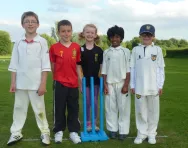
When Will unexpectedly pitched up at cricket training last summer, I asked him why he was thinking of leaving the club where he’d been a member the previous summer.
His reply was the saddest I have ever heard in 20 years of involvement in junior sport.
‘I want to play for a club,’ said Will, ‘where the coach actually knows my name.’


Start a unique learning programme!
- Weekly programme for each school year
- Worksheets sent direct to your inbox
- Keeps your child's learning on track
Like most parents with no background in sport, Will's mum and dad had responded to their son's enthusiasm by simply enrolling him at the nearest club and assuming it was the right choice.
The club in question did indeed have a large and very successful junior section. The reality, however, was that all the attention was lavished on the best players – even at the age of nine or ten.
The majority, including Will’s parents, were paying for ‘coaching’ sessions that were little more than exercises in crowd control.
Will, a keen but quiet boy, was simply swamped. However, he was bold enough to tell his parents that he wanted to move elsewhere. For others, such a bad experience can turn them off joining a sports club for life.
Five things to look for in a child-friendly junior sports club
1. Quality assurance.
More than 14,000 clubs across dozens of sports have gained Sport England’s Clubmark accreditation. This kitemarking scheme demonstrates that a club is ‘safe, effective and child-friendly’. Criteria include having a trained Welfare Officer, qualified first-aiders and a volunteer coordinator; having carried out DBS (Disclosure and Barring Service – previously known as CRB) checks on all coaches and volunteers; having enough qualified coaches for the number of players; and having a formal structure for running the club. There’s an annual review to ensure standards are being maintained.
‘If you can’t find out whether a particular club holds Clubmark or is working towards it, ask one of the coaches or an official,’ says Elaine Burgess, who works as a Partnership Development Manager in east London and helps build links between schools and clubs. ‘If the answer is negative or they’ve never heard of Clubmark, ask yourself whether the club is genuinely committed to the well-being of its young members.’
2. Coaching standards.
Clubmark requires a certain ratio of qualified coaches to players in order to ensure sessions operate safely. However, this isn’t a guarantee of quality. A Level 1 coach is mainly trained in how to organise groups of children; coaches at Level 2 and above have much greater experience and skills to make every session enjoyable and constructive.
Ideally a club should have at least one Level 2 coach while those at Level 1 should be working towards the higher qualification. This ensures coaches are up to date with the latest thinking and the children attending will feel their skills are developing with each session. After all, there’s nothing more boring than doing the same training routines every week because the coach hasn’t bothered to go on a course and learn some new ones.
3. The numbers game.
Big is not always better. A large club may sound impressive – indeed, it may boast about its numbers in a bid to recruit even more. But as Will’s experiences showed, children can simply ‘disappear’ when there are dozens in each age group. There may also be ‘pushy parents’ bending the ear of the coaches and demanding to know why their son or daughter hasn’t been selected for the team.
Ask about the ratio of coaches to players in each age group; whether there is more than one team; whether teams play at different levels to ensure everyone who wants to has a chance to compete; and how much dedicated coaching each child can expect at training sessions.
Small club may sometimes lack the ‘glamour’ of bigger set-ups, but often offer a much more personalised experience with every player really valued.
4. Child welfare.
Clubmark requires a trained Welfare Officer to be in place, but who is this important individual? Is it an already overburdened official simply ticking a box, or someone who understands that child protection is fundamental to kids’ enjoyment of club sport?
According to Anne Tiivas, Director of the NSPCC’s Child Protection in Sport Unit, the aim is to create ‘a welcoming and inclusive club, where the views of children and their parents are actively sought and considered’. That means a Welfare Officer who attends training sessions and competitions. He or she should know the coaches, know their style, and be keeping an eye on how they interact with the children. Every parent should know the Welfare Officer by name – and feel comfortable approaching them about any issue to do with their child’s experiences.
5. F-U-N.
‘Being part of a sports club should be fun for kids, and fun for their parents too,’ says Elaine Burgess. That means getting a feel for the atmosphere and ethos before parting with your cash.
Is it a club where winning is all that matters, or is ‘sport for all’ the stated priority? And is this merely paying lip service to giving everyone a chance, or does the club genuinely put this philosophy into practice?
Try to watch a match or two: does the seemingly nice dad running the under-eights suddenly turn into a shouty monster when his team concedes a goal? Are all the other parents shouting at the players as well, without anyone telling them to be quiet? Do all the players get an equal time on the pitch or are some left shivering on the sidelines? Or is skilful play by both teams applauded and rewarded? And does everyone end a game feeling tired but proud regardless of the result, rather than fearful of what the manager might say?
Finally, what about you?
You may not be very interested in sport, but you could be spending quite a lot of time at the club if your child is really keen.
Does anyone say hello? Are the coaches, officials and other parents chatty and positive about the club? If there’s a clubhouse, can you buy a cup of tea? Is there a noticeboard where you can find out what’s going on? Has anyone thanked you for your involvement and asked whether you might be interested in lending a hand? Or are you just another parent, whose only role is to fork out for kit, training fees, more kit, match fees and yet more kit? If that’s the case, then maybe your child faces being treated the same way too.
Andrew Shields is head coach at South Loughton Cricket Club in Essex and also coaches athletics and football.

